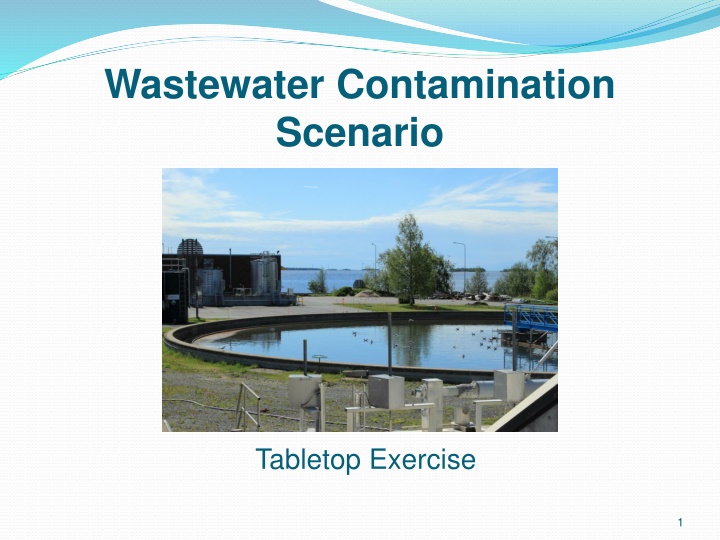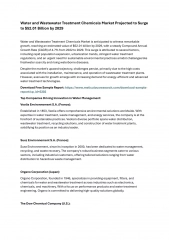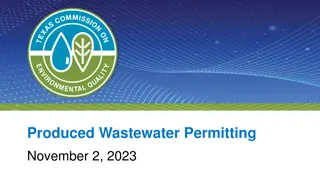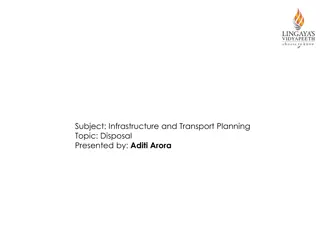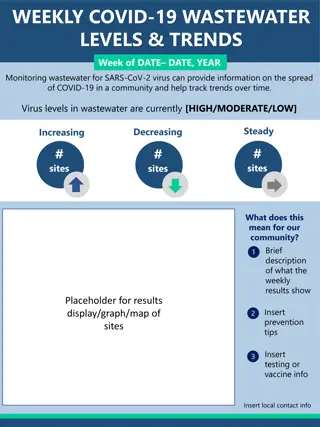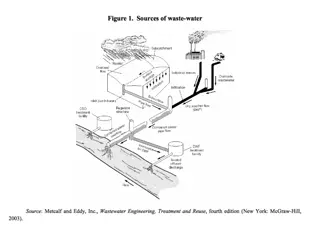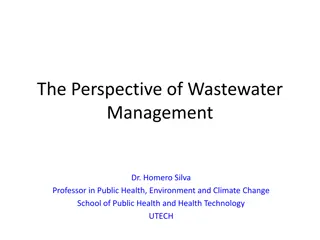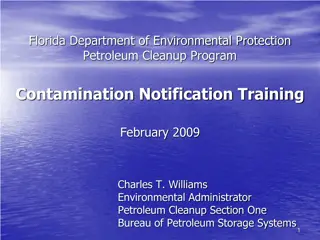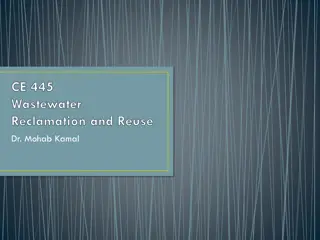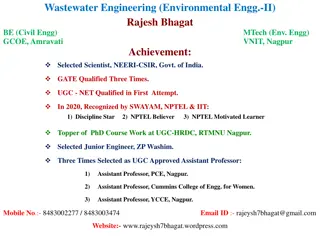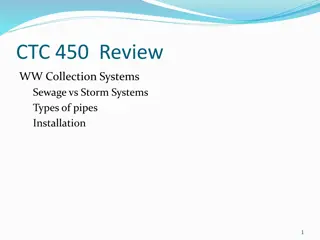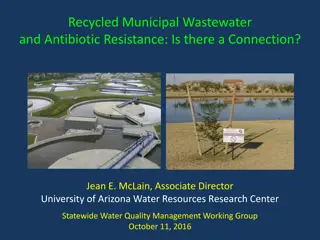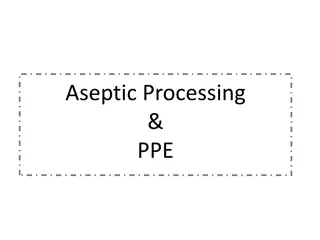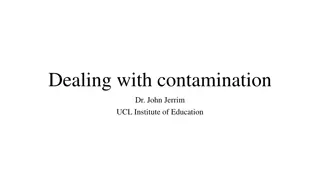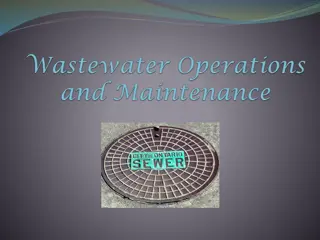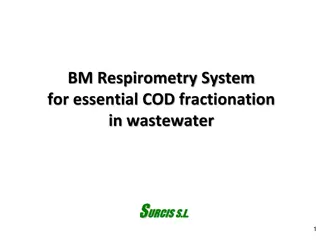Wastewater Contamination scenario
Engage in a tabletop exercise focused on managing wastewater contamination incidents. The exercise includes introductions, agenda review, scenario discussion, action planning, and more to enhance emergency response readiness and effectiveness.
Download Presentation

Please find below an Image/Link to download the presentation.
The content on the website is provided AS IS for your information and personal use only. It may not be sold, licensed, or shared on other websites without obtaining consent from the author.If you encounter any issues during the download, it is possible that the publisher has removed the file from their server.
You are allowed to download the files provided on this website for personal or commercial use, subject to the condition that they are used lawfully. All files are the property of their respective owners.
The content on the website is provided AS IS for your information and personal use only. It may not be sold, licensed, or shared on other websites without obtaining consent from the author.
E N D
Presentation Transcript
Wastewater Contamination Scenario Tabletop Exercise 1
Tabletop Exercise Welcome and introductions Discuss agenda for the day Review administrative details Start the exercise 2
Welcome and Introductions Name Organization Emergency response experience 3
Agenda Review exercise materials and rules Review scenario(s) Break Facilitated discussion period Action planning session ( hot wash ) Review and conclusion Closing comments 4
Administrative Details Location of emergency exits Location of restrooms Cell phone and pager management Logging your time to fulfill training requirements Sign-in sheet and participant evaluation form 5
Exercise Benefits: Increase readiness in the event of an actual emergency Provide a means to assess effectiveness of response plans and response capabilities Serve as a training tool for response personnel and their involvement with other response agencies Provide an opportunity to practice skills and improve individual performance in a non- threatening environment 6
Exercise Benefits: (cont.) Require participants to network with each other and pre-plan decisions on resources Identify planning conflicts or gaps Identify resource needs and opportunities for sharing of resources Clarify internal and external roles and responsibilities 7
Exercise Objectives: At the conclusion of this exercise, participants should be able to do the following: Define or refine participants roles and responsibilities for managing the consequences of a wastewater hazardous material contamination incident, which should be reflected in their plans, policies and procedures and other preparedness elements currently in place or under development Build relationships between utilities and stakeholders 8
Exercise Objectives: (cont.) Determine neighboring utility water infrastructure capabilities and needs Identify other needed enhancements related to training and exercises and other preparedness elements currently in place or under development This session will not be a success unless you as a participant go back to your office and follow through 9
Roles and Responsibilities: Players respond to the situation presented based on expert knowledge of response procedures, current plans and procedures and insights derived from training and experience Observers observe the exercise but do not participate in the facilitated discussion period Facilitators lead the exercise by presenting the scenario narrative and facilitating the discussion period and hot wash (Action planning session or review session) Evaluators monitor the exercise, track accomplishments according to objectives and may ask questions 10
Exercise Rules: This exercise will be held in an open, low-stress, no- fault environment varying viewpoints, even disagreements, are expected Respond to the scenario using your knowledge of current plans and capabilities (i.e., you may use only existing assets) and insights derived from your training Decisions are not precedent setting and may not reflect your organization s final position on a given issue this exercise is an opportunity to discuss and present multiple options and possible solutions 11
Exercise Rules: (cont.) Issue identification is not as valuable as suggestions and recommended actions that could improve [prevention, protection, mitigation, response or recovery] efforts problem-solving efforts should be the focus Assume there will be cooperation and support from other responders and agencies The basis for discussion consists of the scenario narrative and modules, your experience, your understanding of your Emergency Response Plan (ERP), your intuition and other utility resources included as part of this material or that you brought with you Treat the scenario as if it will affect your area 12
Action Planning Session: Following the facilitated discussion period, the facilitator will lead an Action Planning Session, also known as a hot wash Participants are encouraged to identify, discuss and prioritize next steps, actions, tasks and other follow-up activities Identify additional collaborators if needed Schedule a follow-up meeting 13
Wastewaster Contamination Scenario 14
Background It is spring and rain has fallen on and off for several weeks Over that timeframe, the wastewater utility has noted an increase in flows due to infiltration and inflows into the collection system The amounts are noteworthy, but within normal ranges for this time of year 15
Module 1 April 24 Threat of Contamination is Observed 16
Module 1 April 24,0700 hrs State regulatory inspectors begin inspecting hazardous materials facilities in the general area They locate an illegal chroming operation in a warehouse The illegal operators, hearing that spot inspections were occurring in the area, ran tubing into the sewer and dumped all the waste before abandoning the site 17
Key Issues Module 1 The community has a tertiary wastewater treatment plant the treatment process begins with primary sedimentation, followed by secondary treatment using activated sludge and tertiary treatment with nitrogen removal prior to discharge The process of chroming involves the use of many hazardous chemicals, including strong acids and chromium, a known human carcinogen 18
Module 2 April 25 Contamination Impacts Treatment Process 19
Module 2 April 25,0700 hrs The wastewater utility operators are alarmed by abrupt changes in the color and smell of the treatment process flows Simultaneously, calls from local residents regarding a significant amount of dead fish downstream of the utility outfall are jamming inbound lines at the city and the wastewater utility s offices 20
Module 2 April 25,0700 hrs (cont.) Concerned by observed changes, reduced process efficacy and the reported fish kill, the wastewater utility requests support from area laboratories to analyze influent and effluent samples, as well as samples from the collection system 21
Module 2 April 25,0700 hrs (cont.) Activated sludge floc size and structure characterization seem to show reduced filament abundance, causing the appearance of pin-point flocs and free-dispersed bacteria As a result of dispersed growth, effluent quality deteriorated since significant amounts of suspended solids escaped with the effluent 22
Key Issues Module 2 (cont.) The nitrification process has been significantly inhibited ammonia removal has decreased by up to 75 percent The wastewater utility is concerned that effluent released from the system has already exceeded allowable limits Utility personnel are also concerned about their personal safety when working around the potentially contaminated wastewater 23
Key Issues Module 2 (cont.) Utility personnel begin reviewing the Water Contaminant Information Tool (WCIT) to gather more information on the potential contaminants 24
Module 3 April 25 Response to Contamination Begins 25
Module 3 April 25,1200 hrs The state mobilizes hazardous materials experts and notifies regional federal response teams The local emergency management office calls an emergency meeting The wastewater utility is concerned about staying within permit parameters It is likely that the contaminant has affected the wastewater plant s biomass, contaminated the residuals and impacted the downstream ecosystem 26
Key Issues Module 3 The utility and state experts are unsure whether all the hazardous material has reached the treatment system Drinking water utilities and public safety officials downstream of the affected utility are calling to determine whether downstream utilities may also be at risk Cost estimates for remediation and restoration of the wastewater plant alone may exceed several million dollars 27
Action Planning Session Post-Exercise Hot Wash 28
Review of Exercise Objectives Explore and address cybersecurity challenges Define or refine participants roles and responsibilities for managing the consequences of a cybersecurity incident, which should be reflected in their plans, policies and procedures and other preparedness elements currently in place or under development Build relationships between utilities and stakeholders Increase awareness of the damage that can be caused by a cybersecurity incident on a business or control system Identify other needed enhancements related to training and exercises and other preparedness elements currently in place or under development 29
Conclusion Please turn in your notes from the Action Planning Session, your participant evaluation form and any additional comments you wish to share This information will be used to develop an After Action Report and Improvement Plan 30
Closing Remarks Thank you for participating 31
